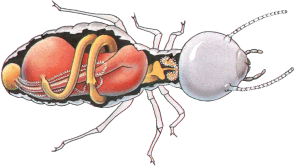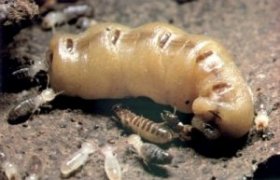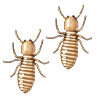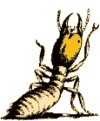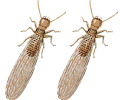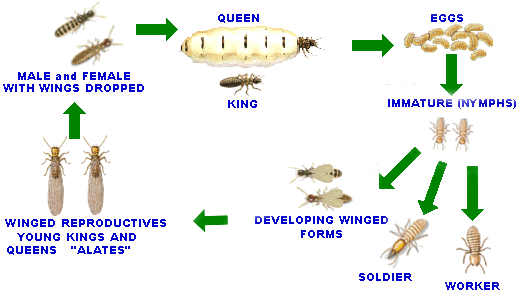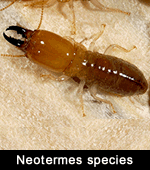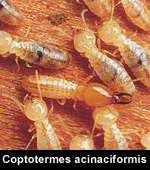 |
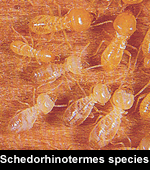 |
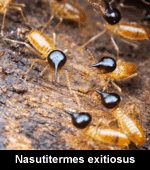 |
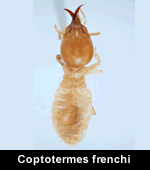 |
|||
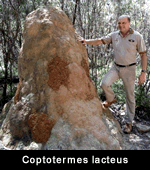 |
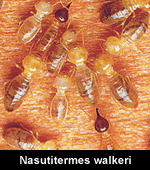 |
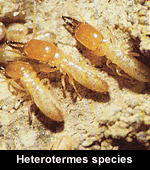 |
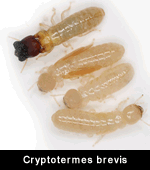 |
A serious economic pest: CSIRO & NSW Industry surveys indicate about 1 in 3 dwellings in NSW have termites on the property. Most homes rare at high risk especially if large gum trees are within 100 metre radius of the building.
The problem is getting worse since the removal of the long lasting soil barrier chemicals; the more common use of softwood building and other landscaping timbers that termites find irresistible, such as, landscaping timber mulch and railway sleepers on ground.
Other important factors promoting termite colony development include automatic watering systems, landscaping and maintenance that encourage termite activity and inappropriate building design that allow hidden termite entry into a building.
RISK ASSESSMENT * 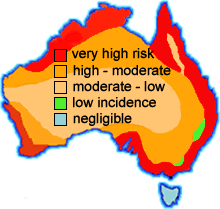
and APCA national survey |
and can eat your house down Termites are known to destroy the wall and roofing timbers of a home within 3 months of construction. Termites cause more damage to homes in Australia than fire, floods, storms and tempest, combined. Termites occur throughout NSW, with a high incidence of attack in virtually all urban areas. Consumer Note: The standard Home and Building Insurance Policy will NOT cover the repair costs of termite infested structural and decorative timbers. |
Fascinating biology: Australian subterranean termites evolved about 250 million year ago, long before flowering plants. Their survival success depends on living in a protective underground environment. In some species, their colony nest has a hardened shell, exposed above ground level. In most destructive species in NSW their nest is totally out of sight, below ground level.
The worker termites build mud-tubes over hard objects. The tubes or "galleries" are made up of partly digested timber and mud excrete, and is moist if currently in active use. The termites keep it's colony nest and galleries at 25 to 35oC with high humidity. If they are exposed to light or open air they will desiccate (dehydrate) and die. They live in constant darkness, excepting for the annual summer swarms of the winged reproductives.
A million termites in the nest: In some destructive species, a termite colony nest may contain more than a million termites, consisting of a queen, king, young immature nymphs, workers, soldiers and winged reproductives (called alates). They are delicate, soft bodied and small in stature, about half the size of match-head. But they are also highly efficient timber recyclers, and often described as Mother nature's best builders.
The worker termites are blind and forage in a largely random criss-cross fashion looking for new timber food sources. However, they may encounter and follow moisture zones and trail along solid objects, such as, the concrete slab edge of your home. The soldiers accompany the workers in their constant search for new timber food sources. If you find termites active in timber framing, it is the soldiers that rush out to defend the workers.
Experience counts: It takes many years of termite control field-work experience to get a proper understanding of the habits of the destructive termite species habits and their likely foraging areas in a variety of building types and environmental circumstances.
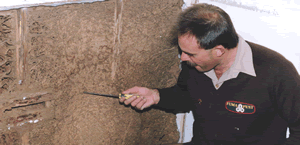 |
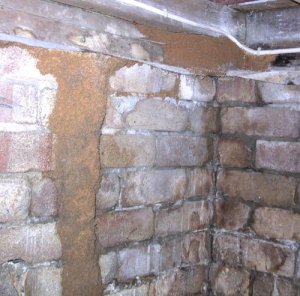 |
|
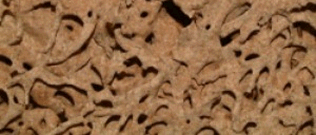 |
||
Picture on top left shows FUMAPEST inspector examining a subsidiary termite nest inside a wall cavity of a home ✦ termites build such nests if they have a reliable moisture source eg caused by ✦ faulty plumbing ✦ leaking pipes ✦ shower recess ✦ guttering ✦ broken roof tiles and the like. Look for tell-tale termite mud-tubes ✦ picture above on right shows a mud-shelter tube termites have built over a brick foundation wall to the flooring timbers in a sub-floor of a home. Termites are highly secretive ✦ they may enter a building through areas inaccessible to inspection such as ✦ via on-ground patios ✦ cracks ✦ expansion joints ✦ around concrete slab flooring ✦ particularly if the slab edge is obscured by pathways or garden beds. Tiny termite entry points around your home? Termites can pass through a 2 mm crack in concrete slab on-gound flooring and will readily eat through the rubber compound between the adjoining concrete slabs to gain access ✦ termites can then travel under parquetry and other floor tiles to get to the wall and roofing framing timbers. |
